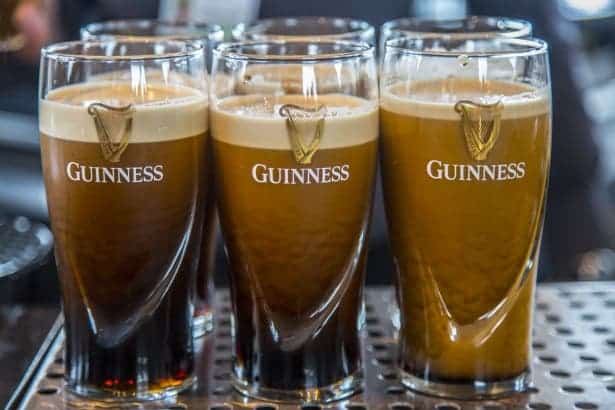This article is, unfortunately, not sponsored by Guinness — but we’re open for discussion.

Beer is one of the most popular drinks in the world, and physicists take their beer very seriously. In a new study, a team of Japanese researchers analyzed an unusual phenomenon related to one of the most famous and recognizable beers in the world: Guinness.
Guinness is an Irish dark stout. It’s known for its remarkable taste and creamy texture, but researchers were interested in one thing which might escape most patrons of a pub: its bubbles. Imagine pouring yourself a beer, and try to visualize the bubbles. They go up, right? According to Archimedes’ principle, bubbles in liquid generally rise because of the gas-liquid density difference. Yet in a pint of Guinness, bubbles also go down.
Several studies have addressed this unusual issue, but overall, the process is still somewhat of a mystery — in part due to the beer’s black color, which obstructs all observations. A previous study claimed that the bubbles’ unusual behavior is owed to the particular shape of the Guinness glass. Now, a team led by Tomoaki Watamura from the University of Osaka, reports that that’s not really the case. Instead, there’s a much more physical reason for how the bubbles behave.
“We performed experiments on the bubble distribution in Guinness poured in an inclined container, and observed how the texture forms,” the study reads. “We also report the texture-formation in controllable experiments using particle suspensions with precisely specified diameters and volume-concentrations.”
The team combined direct observations with laser-induced-fluorescence and computer models to create a detailed profile of the liquid phase velocity. They also used three different types of containers: a pint glass, an inclined rectangular container, and a trapezium-shaped container. They also used a customized setting for lighting and imaging, as well as a Guinness-like water suspension for better visibility.

They found that, for starters, the bubbles in Guinness are much smaller than those in most beers or champagnes — about 10 times smaller. The bubbles-going-down effect does not take place in any fluid with large bubbles — but this doesn’t fully explain the phenomenon. Instead, researchers say, Guinness behaves much like a water film sliding downhill on a rainy day.
When the beer is poured into a typical pint glass (which is wider towards the top), the rising motion of the bubbles creates a film of bubble-free liquid above the inclined wall. This dense film falls, causing the lighter bubble-rich bulk to rise — something which is known as the Boycott effect. Accordingly, this engages the bubbles at the edge of the container, creating a cascade of descending bubbles entrained into the downward flow in Guinness, which is seemingly paradoxical in light of Archimedes’ principle.

The key parameter here is the ratio between the inertia force and the gravity force. This ratio is an indicator for something called the onset of the roll-wave in a liquid-film. Remember when we said Guinness was behaving like rain sliding down on a hill? It’s exactly the same phenomenon: the same ratio (between inertia and gravity) directs the formation of water film sliding down. The cascading waves collide and coalesce with their neighbors, creating a particular structure and a downstream motion.
Essentially, the bubble cascade in Guinness beer is caused by gravity current instability.
“The hydrodynamic condition for the texture-formation is analogous to the critical point of the roll-wave instability in a fluid film, which can be commonly observed in water films sliding downhill on a rainy day. Here, we identify the critical condition for the texture-formation and conclude that the roll-wave instability of the gravity current is responsible for the texture-formation in a glass of Guinness beer,” the researchers conclude.
The study has been published in Scientific Reports.


